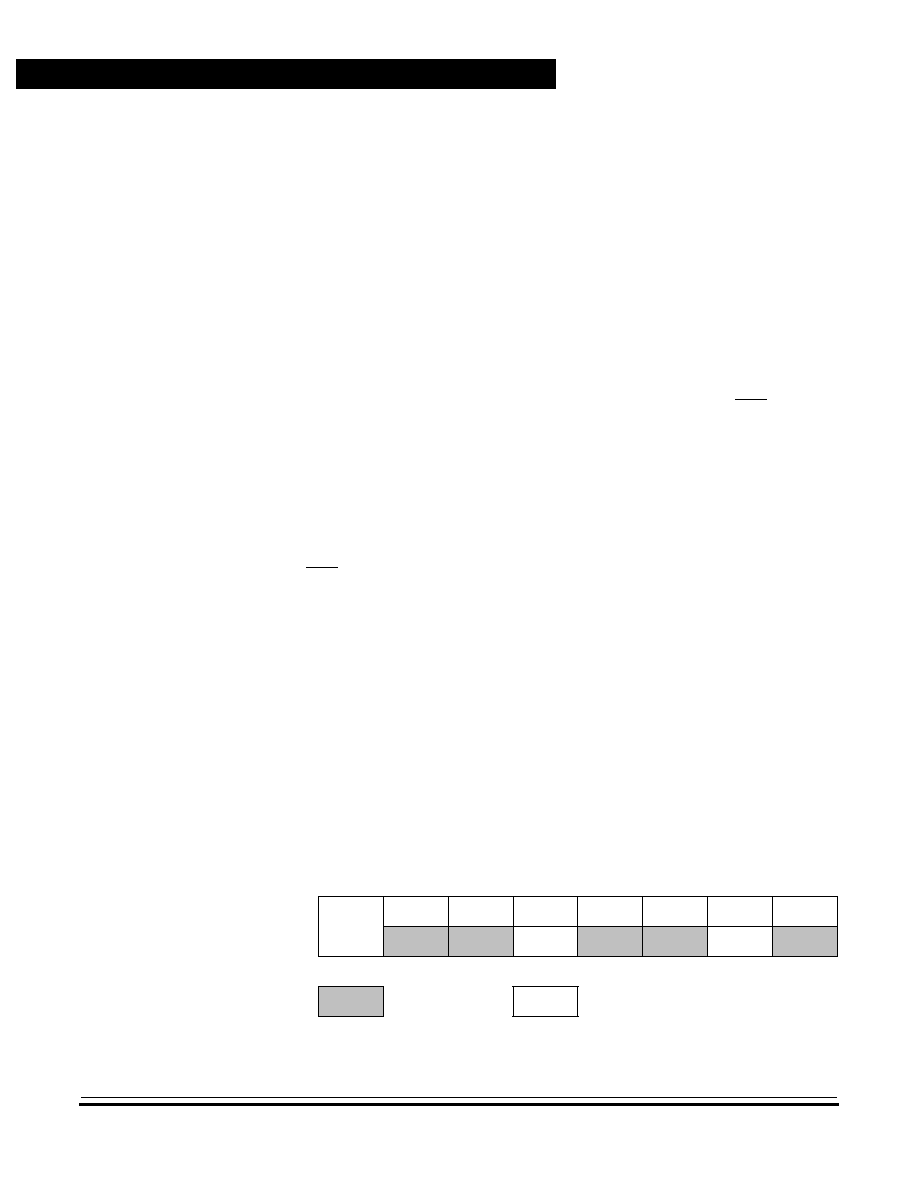- 您現(xiàn)在的位置:買賣IC網(wǎng) > PDF目錄98013 > MC68HLC705KJ1CDWR2 (MOTOROLA INC) 8-BIT, OTPROM, 4 MHz, MICROCONTROLLER, PDSO16 PDF資料下載
參數(shù)資料
| 型號(hào): | MC68HLC705KJ1CDWR2 |
| 廠商: | MOTOROLA INC |
| 元件分類: | 微控制器/微處理器 |
| 英文描述: | 8-BIT, OTPROM, 4 MHz, MICROCONTROLLER, PDSO16 |
| 封裝: | SOIC-16 |
| 文件頁(yè)數(shù): | 5/144頁(yè) |
| 文件大小: | 1377K |
| 代理商: | MC68HLC705KJ1CDWR2 |
第1頁(yè)第2頁(yè)第3頁(yè)第4頁(yè)當(dāng)前第5頁(yè)第6頁(yè)第7頁(yè)第8頁(yè)第9頁(yè)第10頁(yè)第11頁(yè)第12頁(yè)第13頁(yè)第14頁(yè)第15頁(yè)第16頁(yè)第17頁(yè)第18頁(yè)第19頁(yè)第20頁(yè)第21頁(yè)第22頁(yè)第23頁(yè)第24頁(yè)第25頁(yè)第26頁(yè)第27頁(yè)第28頁(yè)第29頁(yè)第30頁(yè)第31頁(yè)第32頁(yè)第33頁(yè)第34頁(yè)第35頁(yè)第36頁(yè)第37頁(yè)第38頁(yè)第39頁(yè)第40頁(yè)第41頁(yè)第42頁(yè)第43頁(yè)第44頁(yè)第45頁(yè)第46頁(yè)第47頁(yè)第48頁(yè)第49頁(yè)第50頁(yè)第51頁(yè)第52頁(yè)第53頁(yè)第54頁(yè)第55頁(yè)第56頁(yè)第57頁(yè)第58頁(yè)第59頁(yè)第60頁(yè)第61頁(yè)第62頁(yè)第63頁(yè)第64頁(yè)第65頁(yè)第66頁(yè)第67頁(yè)第68頁(yè)第69頁(yè)第70頁(yè)第71頁(yè)第72頁(yè)第73頁(yè)第74頁(yè)第75頁(yè)第76頁(yè)第77頁(yè)第78頁(yè)第79頁(yè)第80頁(yè)第81頁(yè)第82頁(yè)第83頁(yè)第84頁(yè)第85頁(yè)第86頁(yè)第87頁(yè)第88頁(yè)第89頁(yè)第90頁(yè)第91頁(yè)第92頁(yè)第93頁(yè)第94頁(yè)第95頁(yè)第96頁(yè)第97頁(yè)第98頁(yè)第99頁(yè)第100頁(yè)第101頁(yè)第102頁(yè)第103頁(yè)第104頁(yè)第105頁(yè)第106頁(yè)第107頁(yè)第108頁(yè)第109頁(yè)第110頁(yè)第111頁(yè)第112頁(yè)第113頁(yè)第114頁(yè)第115頁(yè)第116頁(yè)第117頁(yè)第118頁(yè)第119頁(yè)第120頁(yè)第121頁(yè)第122頁(yè)第123頁(yè)第124頁(yè)第125頁(yè)第126頁(yè)第127頁(yè)第128頁(yè)第129頁(yè)第130頁(yè)第131頁(yè)第132頁(yè)第133頁(yè)第134頁(yè)第135頁(yè)第136頁(yè)第137頁(yè)第138頁(yè)第139頁(yè)第140頁(yè)第141頁(yè)第142頁(yè)第143頁(yè)第144頁(yè)

Technical Data
MC68HC705KJ1 — Rev. 2.0
102
External Interrupt Module (IRQ)
MOTOROLA
External Interrupt Module (IRQ)
If edge- and level-sensitive triggering is selected, a rising edge or a high
level on a PA0–PA3 pin latches an external interrupt request. Edge- and
level-sensitive triggering allows the use of multiple wired-OR external
interrupt sources. As long as any source is holding a PA0–PA3 pin high,
an external interrupt request is latched, and the CPU continues to
execute the interrupt service routine.
If edge-sensitive only triggering is selected, a rising edge on a PA0–PA3
pin latches an external interrupt request. A subsequent external interrupt
request can be latched only after the voltage level of the previous
interrupt signal returns to logic 0 and then rises again to logic 1.
NOTE:
The BIH and BIL instructions apply only to the level on the IRQ/VPP pin
itself and not to the output of the logic OR function with the PA0–PA3
pins. The state of the individual port A pins can be checked by reading
the appropriate port A pins as inputs.
Enabled PA0–PA3 pins cause an IRQ interrupt regardless of whether
these pins are configured as inputs or outputs.
The IRQ pin has an internal Schmitt trigger. The optional external
interrupts (PA0–PA3) do not have internal Schmitt triggers.
The interrupt mask bit (I) in the condition code register (CCR) disables
all maskable interrupt requests, including external interrupt requests.
9.5 IRQ Status and Control Register
The IRQ status and control register (ISCR) controls and monitors
operation of the IRQ module. All unused bits in the ISCR read as logic
0s. The IRQF bit is cleared and the IRQE bit is set by reset.
Address:
$000A
Bit 7
654321
Bit 0
Read:
IRQE
0
IRQF
0
Write:
R
IRQR
Reset:
10000000
= Unimplemented
R
= Reserved
Figure 9-4. IRQ Status and Control Register (ISCR)
相關(guān)PDF資料 |
PDF描述 |
|---|---|
| MC68HC705KJ1CDWR2 | 8-BIT, OTPROM, 4 MHz, MICROCONTROLLER, PDSO16 |
| MC68L11F1CFN3 | 8-BIT, EEPROM, MICROCONTROLLER, PQCC68 |
| MC68HC11F1CFN3R2 | 8-BIT, EEPROM, 3 MHz, MICROCONTROLLER, PQCC68 |
| MC68HC11F1CFN3R2 | 8-BIT, EEPROM, 3 MHz, MICROCONTROLLER, PQCC68 |
| MC68SZ328VH66V | 66 MHz, RISC PROCESSOR, PBGA196 |
相關(guān)代理商/技術(shù)參數(shù) |
參數(shù)描述 |
|---|---|
| MC68HLC908JK3CP | 制造商:Rochester Electronics LLC 功能描述:- Bulk |
| MC68HLC908QT1CFQ | 制造商:Rochester Electronics LLC 功能描述:- Bulk |
| MC68HLC908QT4CDW | 制造商:Rochester Electronics LLC 功能描述:- Bulk |
| MC68HLC908QT4CFQ | 制造商:Rochester Electronics LLC 功能描述:- Bulk |
| MC68HLC908QY1CDW | 制造商:Rochester Electronics LLC 功能描述:LOW V-1.5K FLASH W/O ADC - Bulk |
發(fā)布緊急采購(gòu),3分鐘左右您將得到回復(fù)。